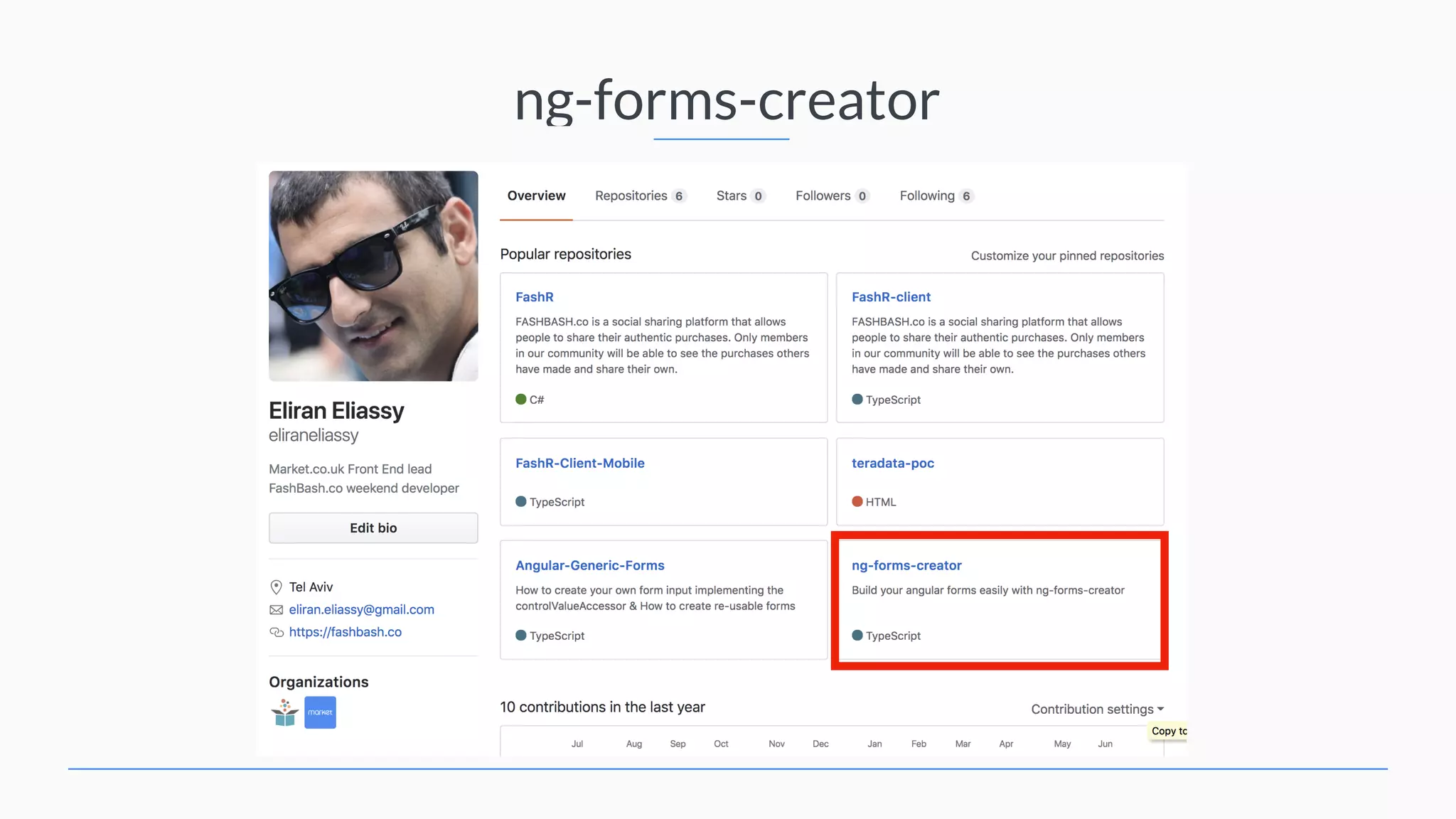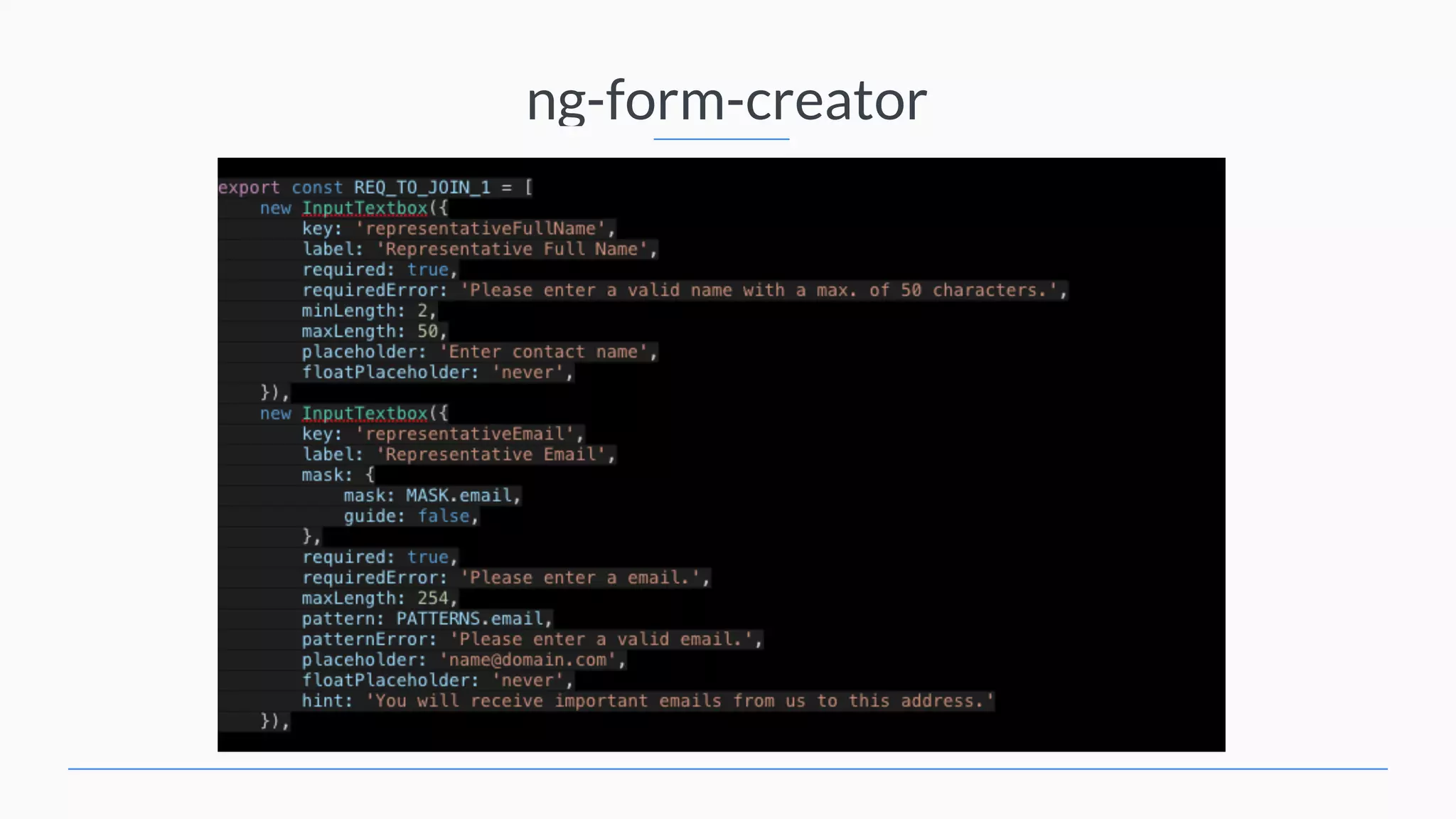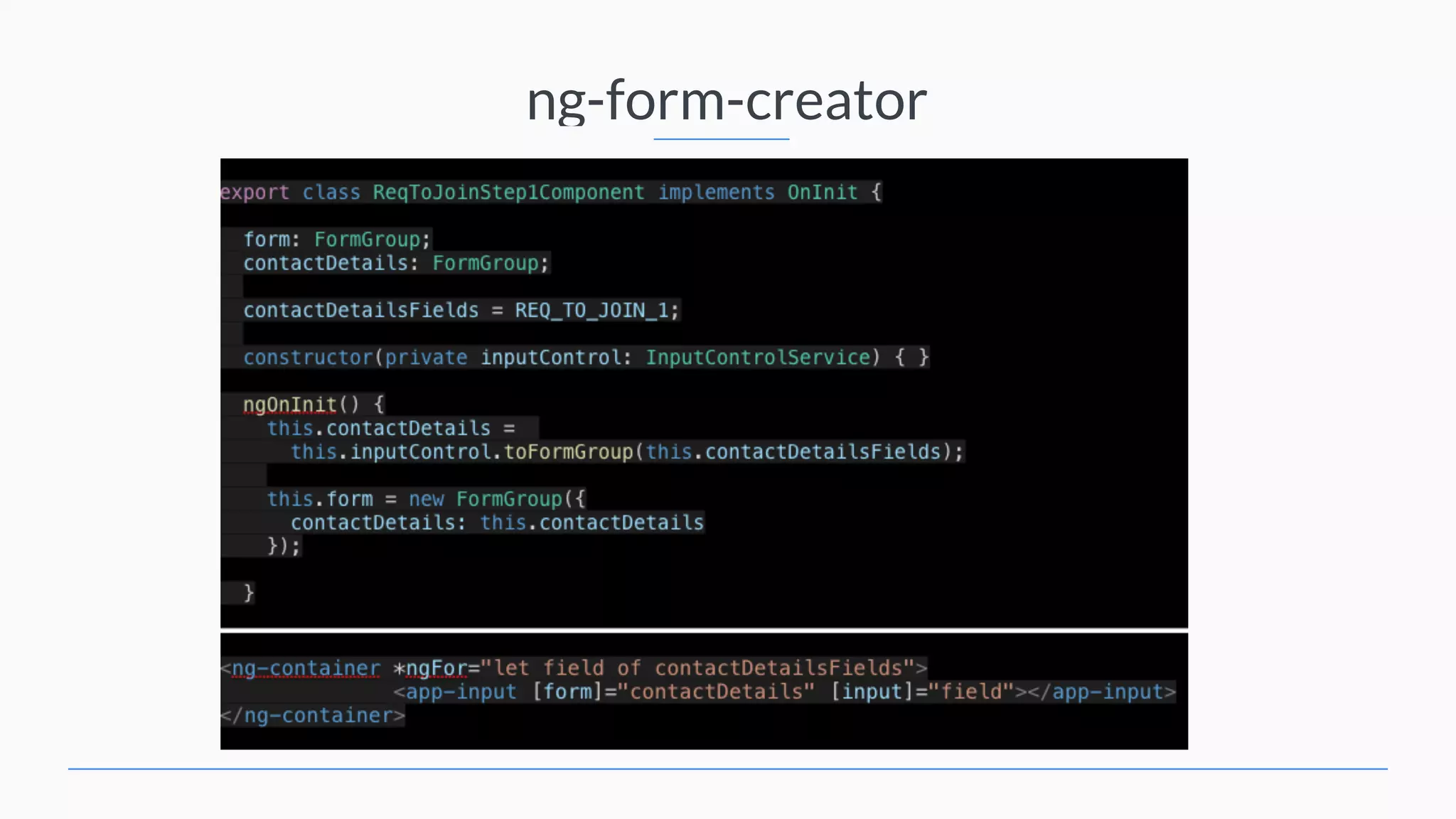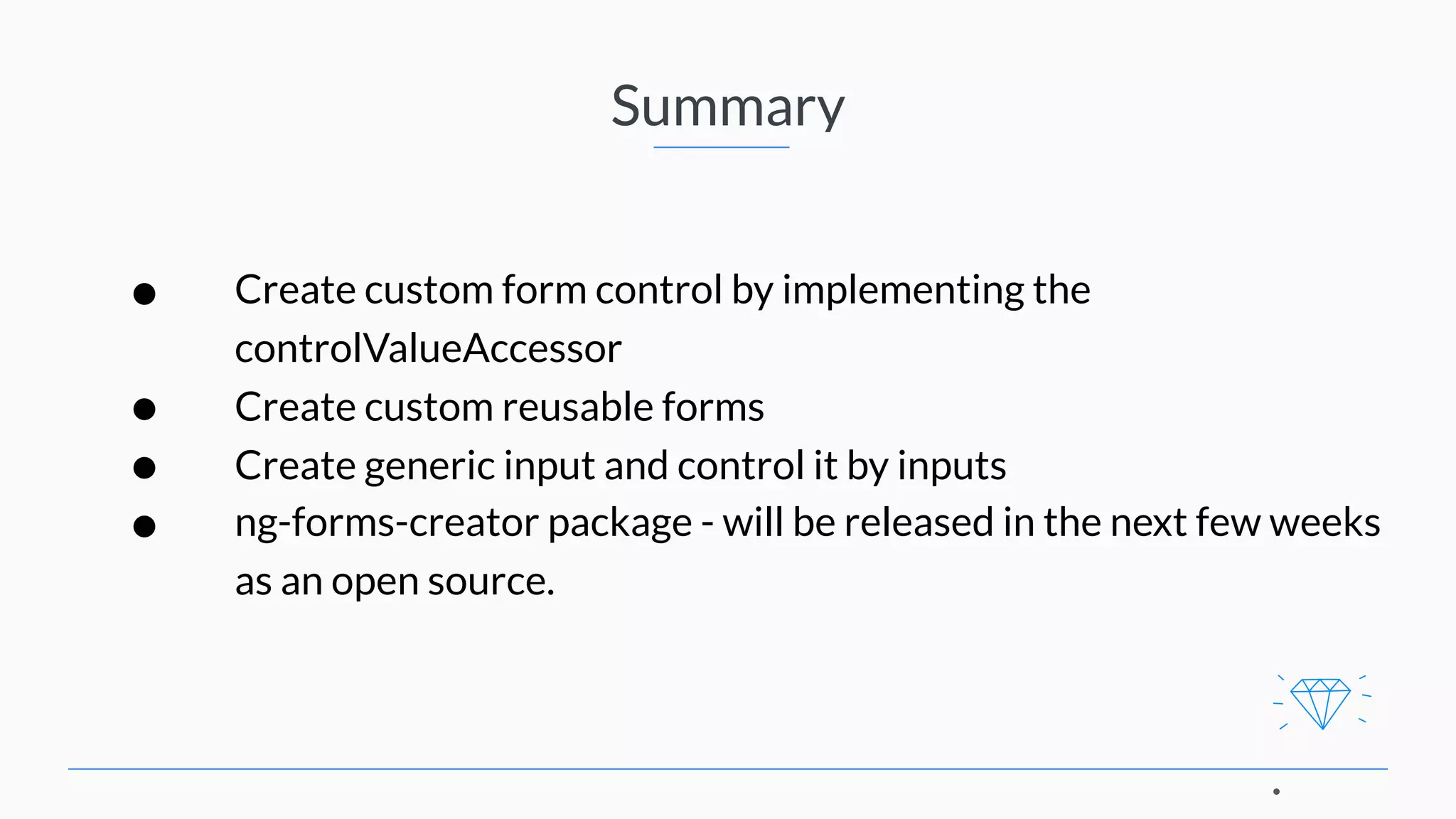1) The document discusses how to create reusable generic form controls and reusable forms in Angular. 2) It demonstrates implementing the ControlValueAccessor interface to create a custom input component that can be controlled via inputs and outputs. 3) A technique for creating reusable forms is presented where the FormGroupDirective is used to inject the parent form and avoid duplicating the form definition code.
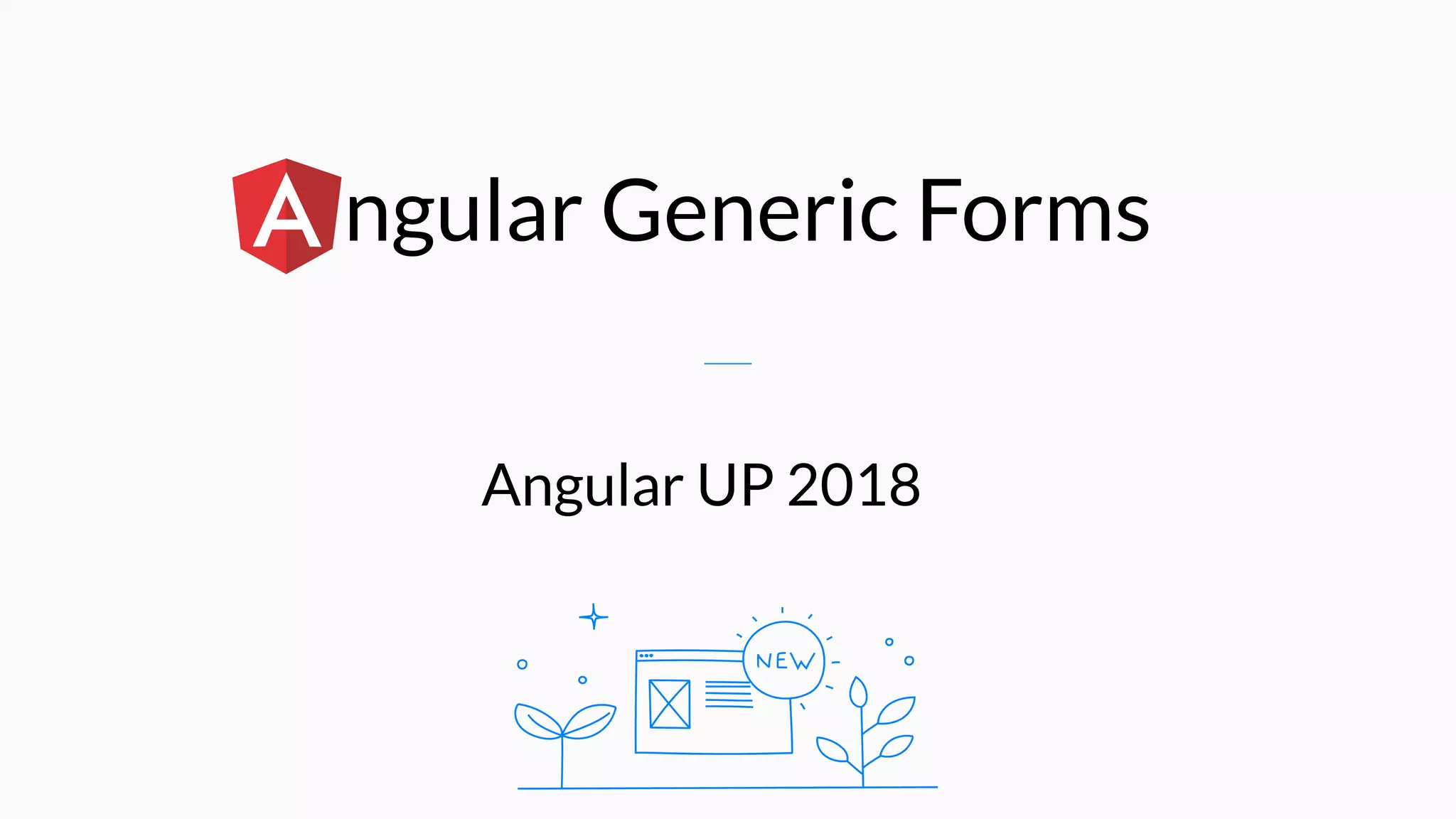




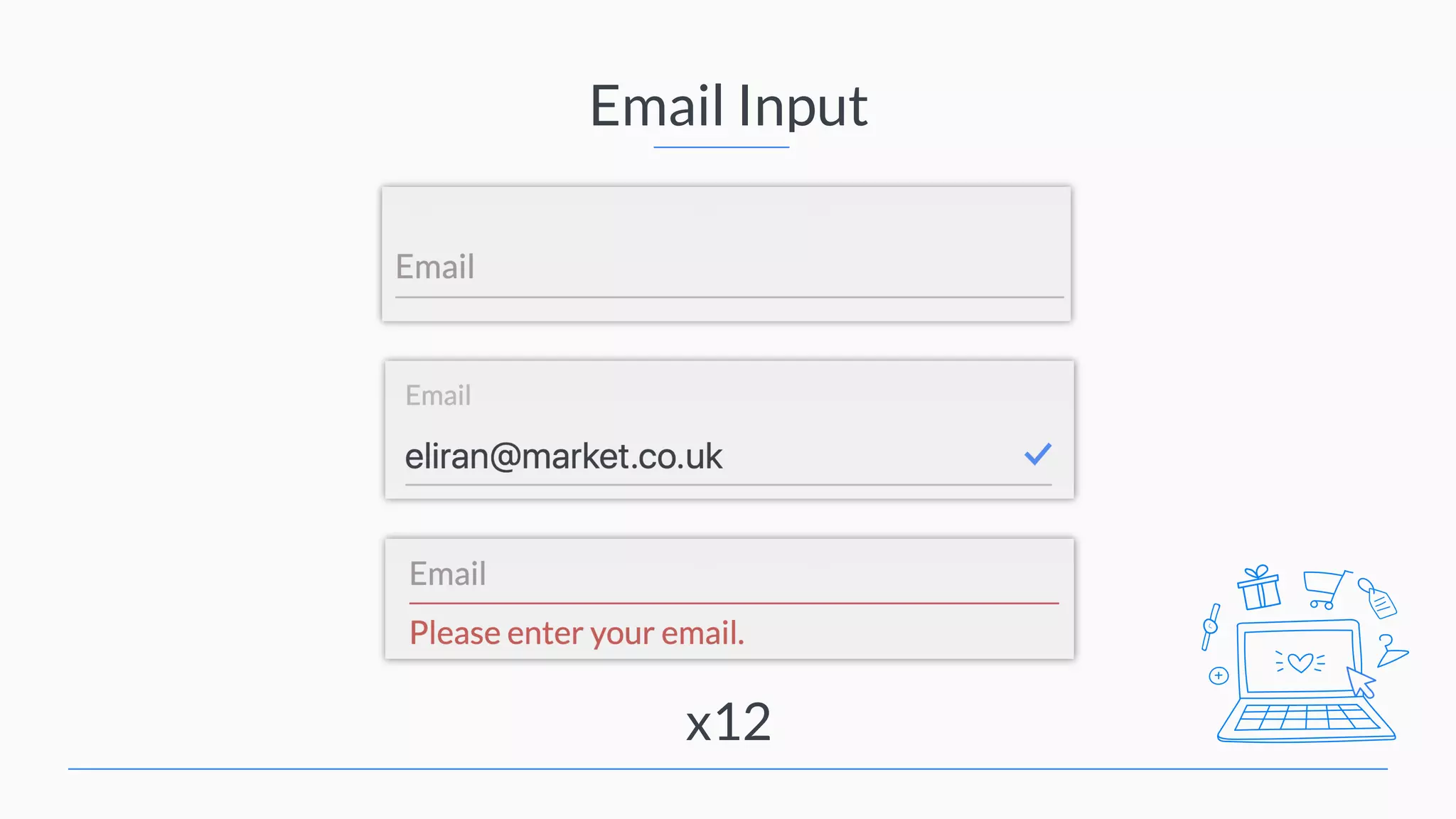

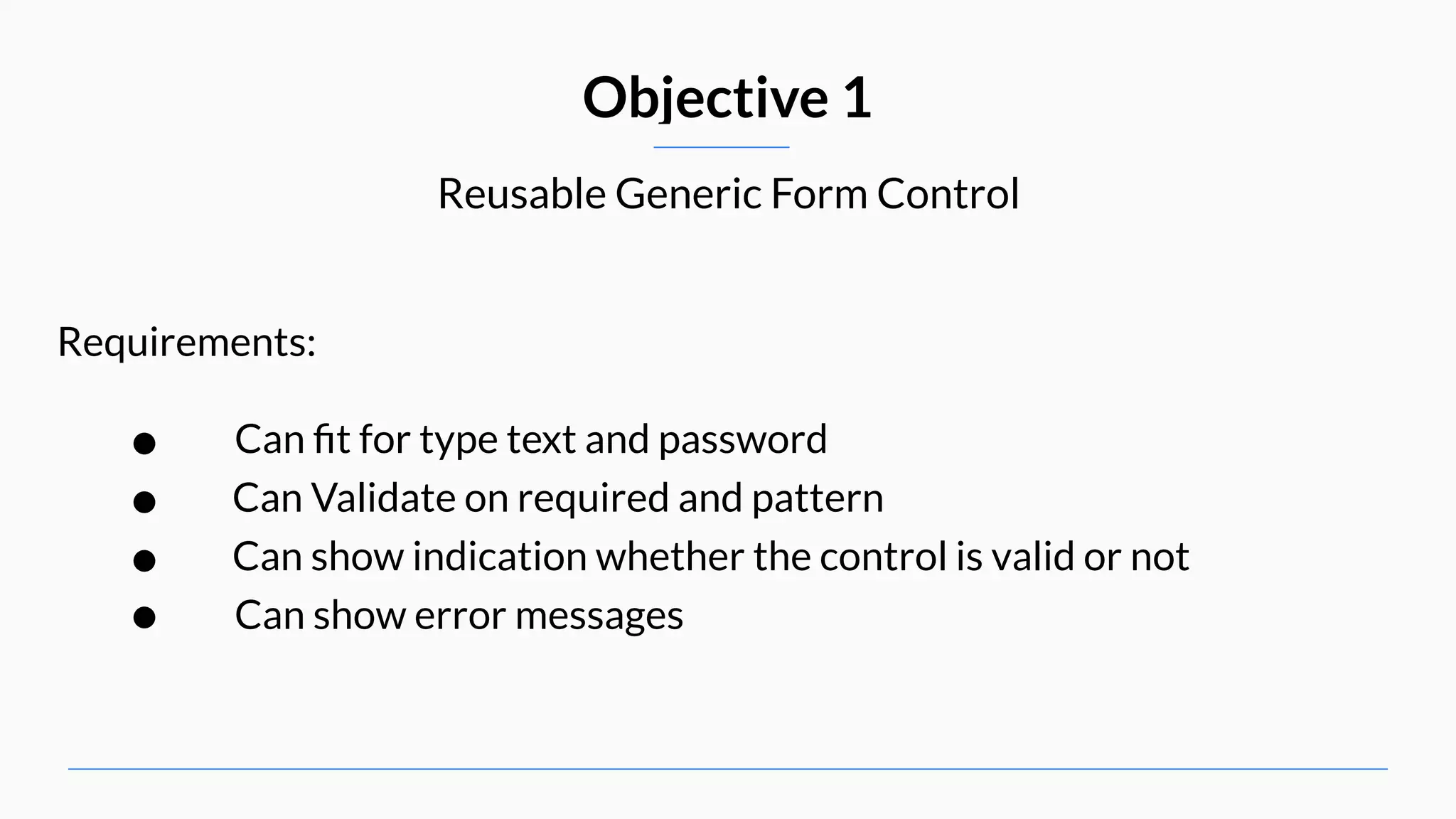

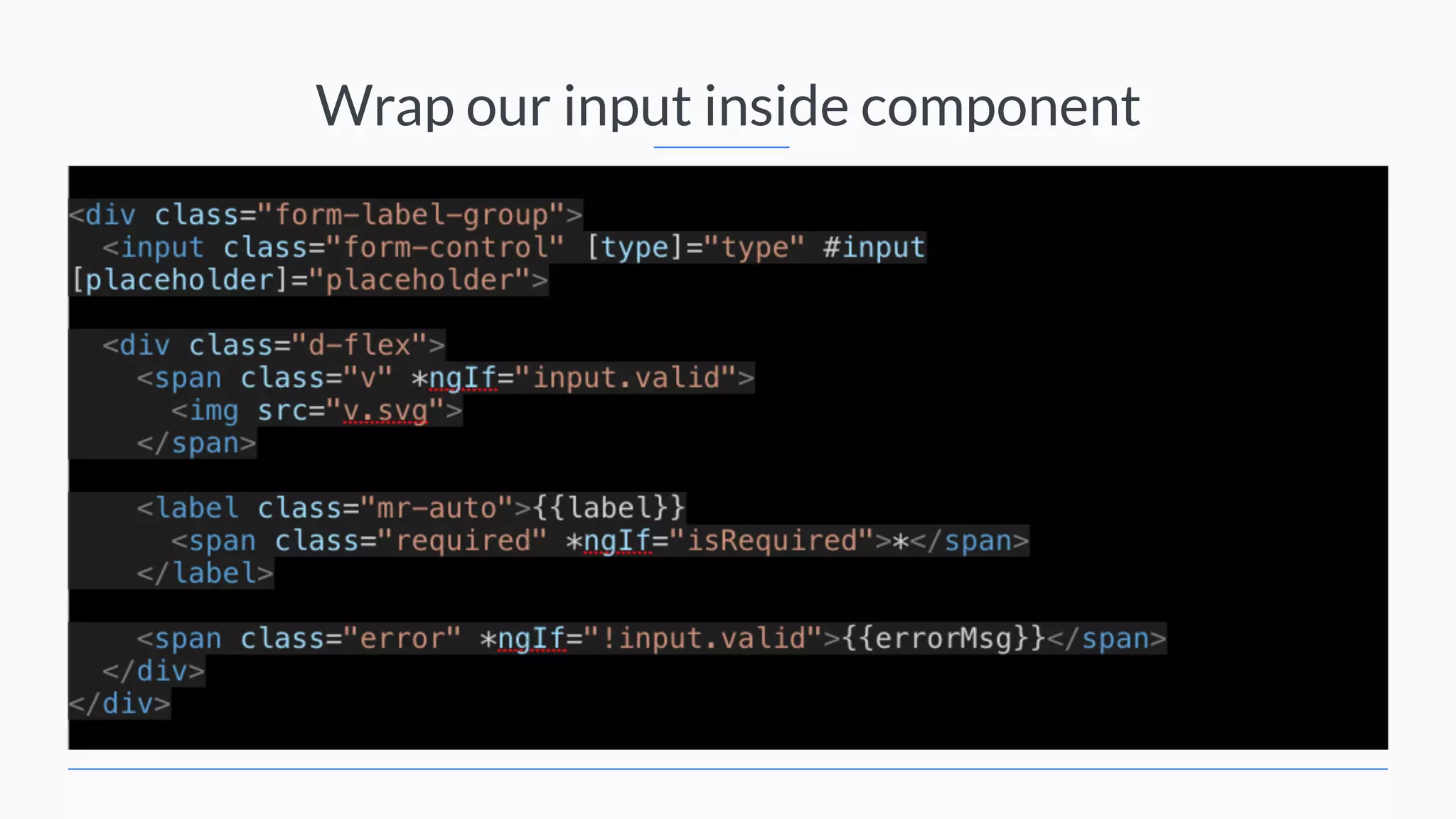
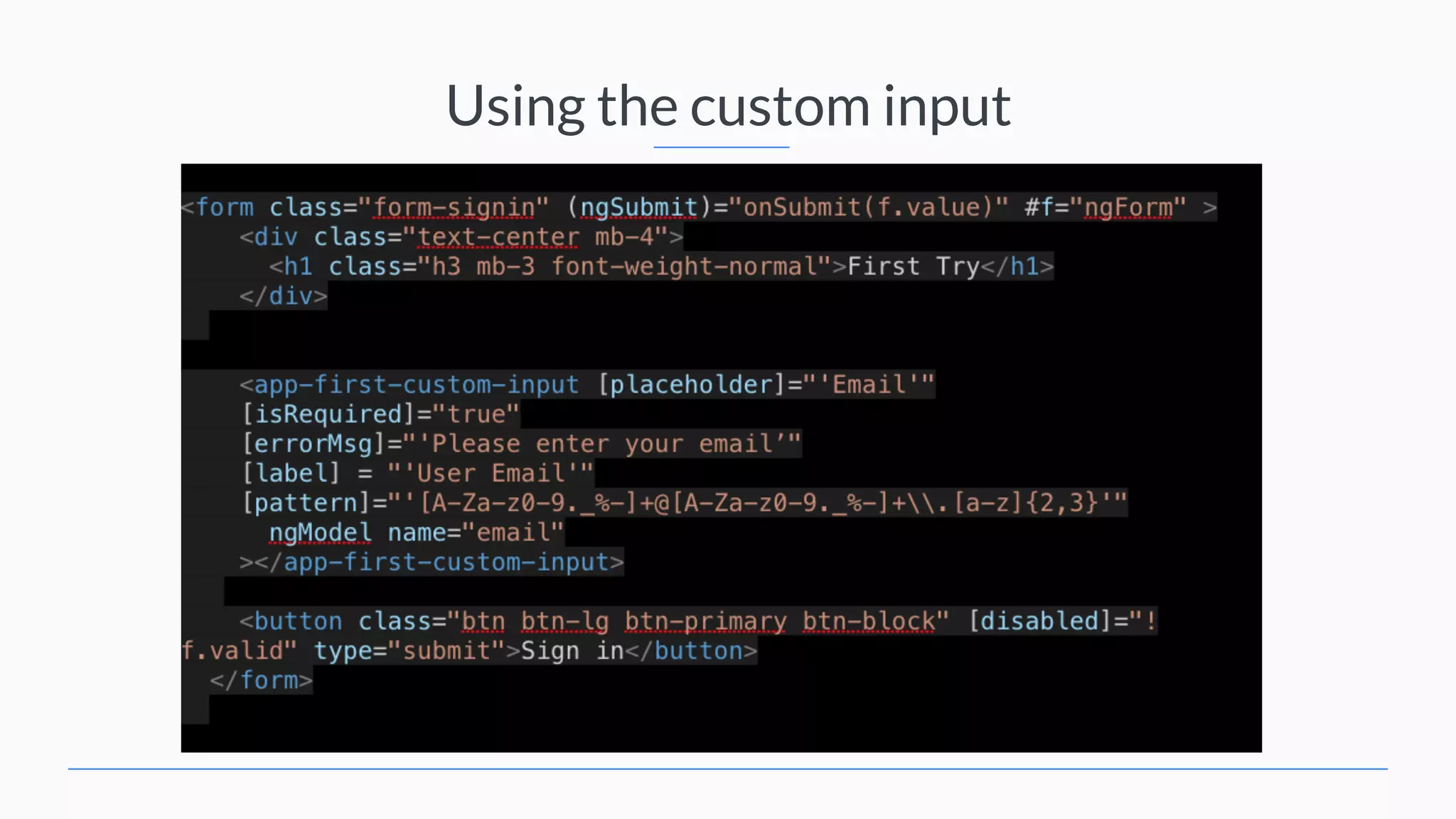
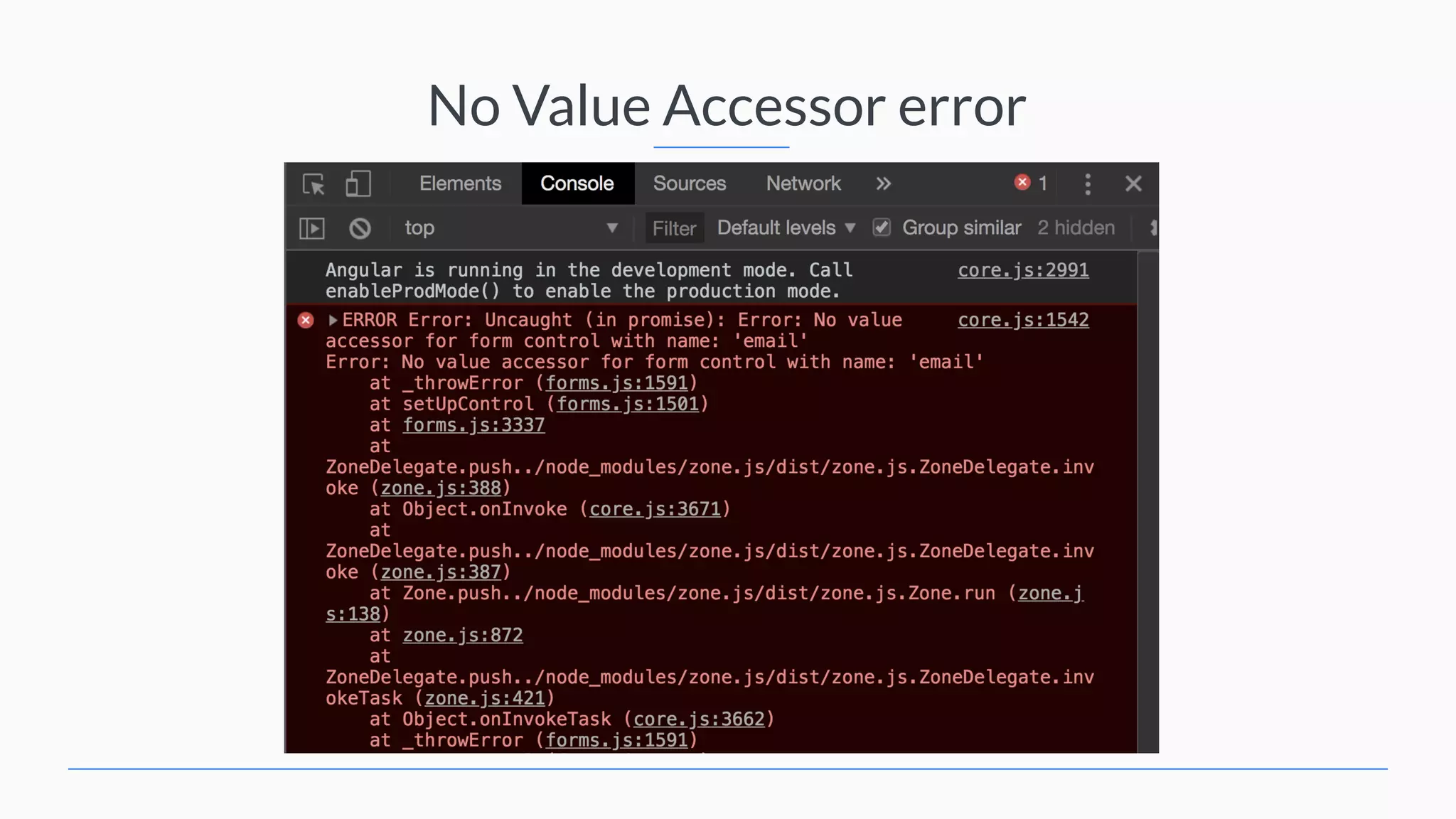

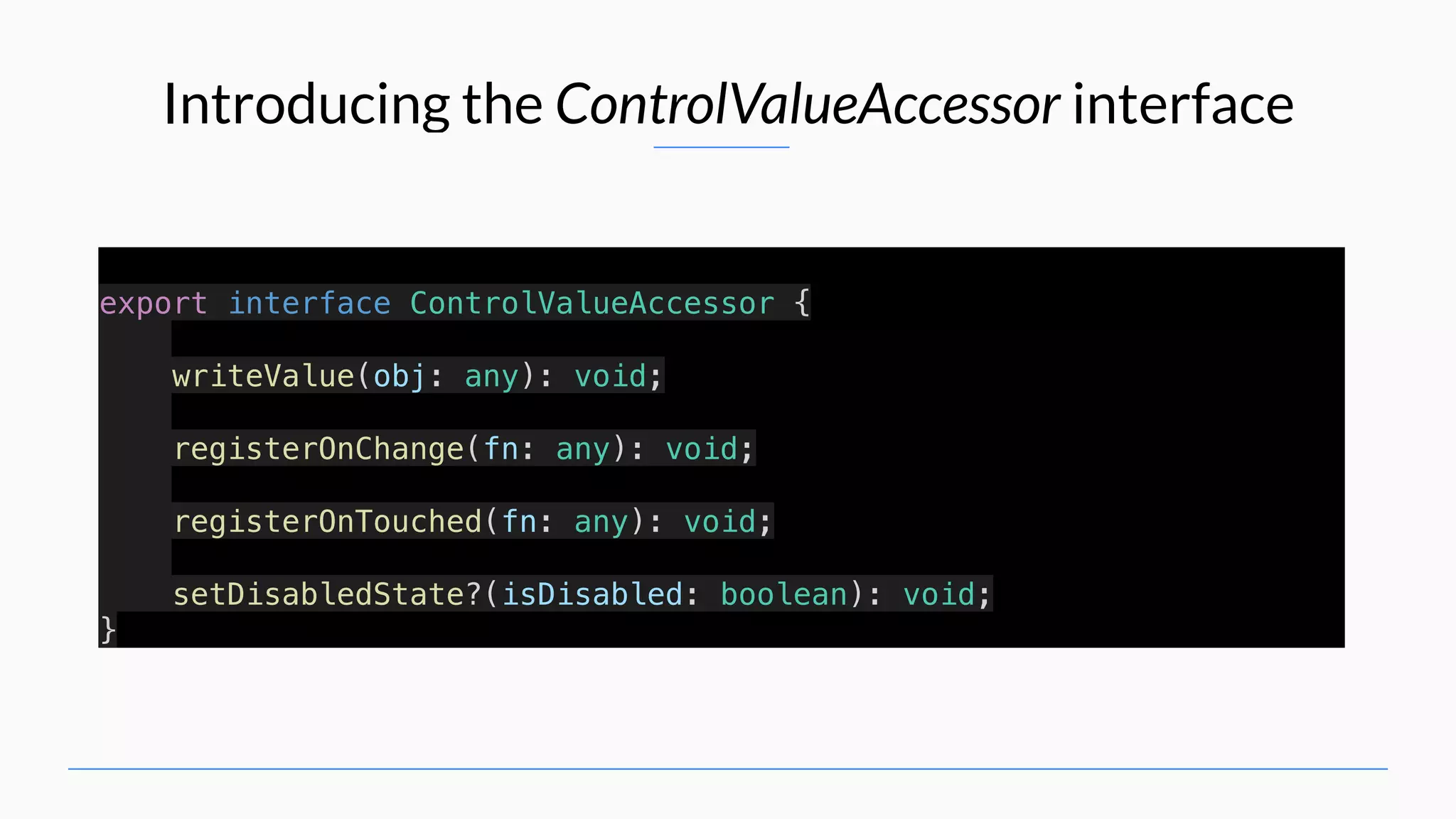
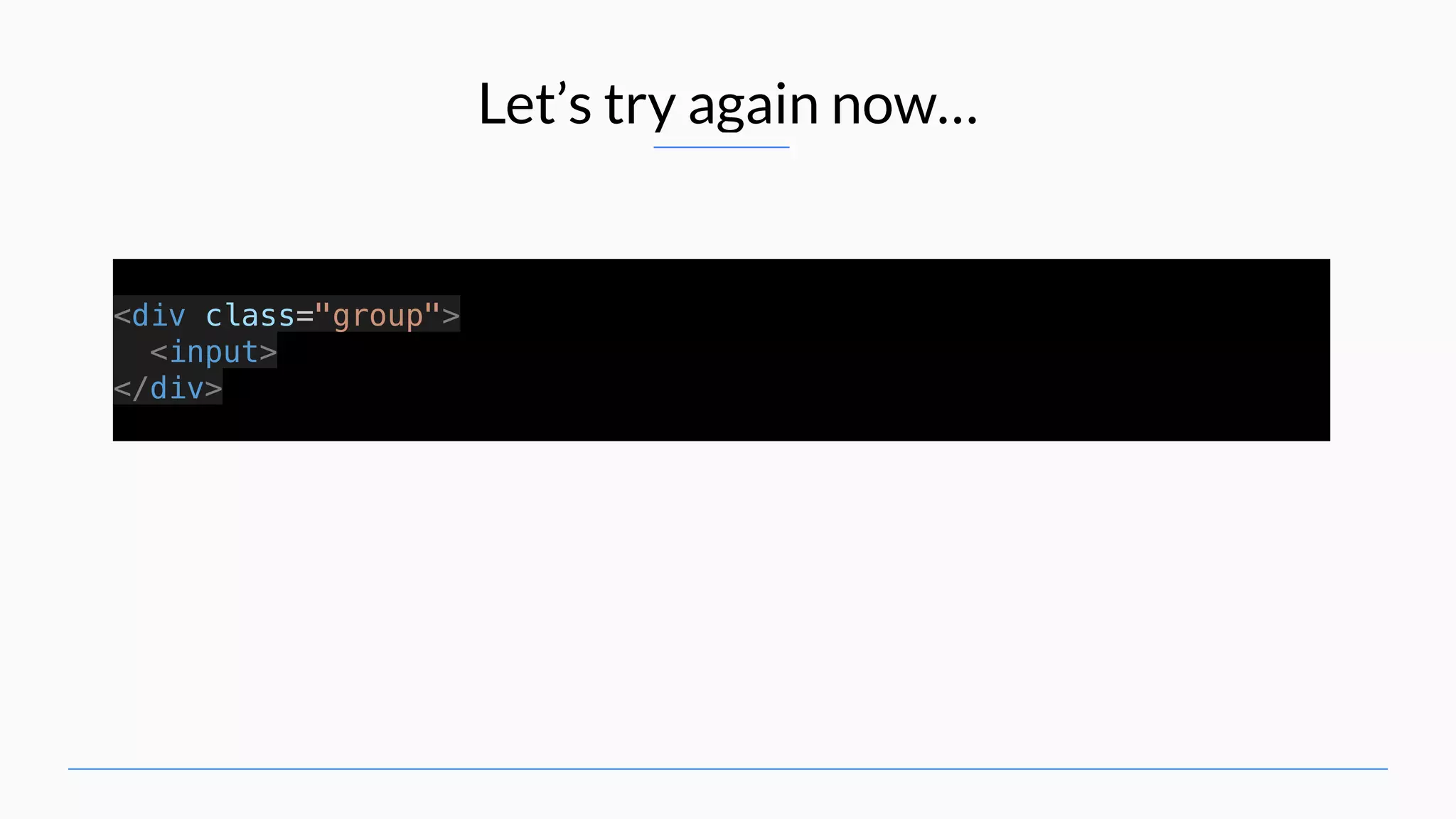
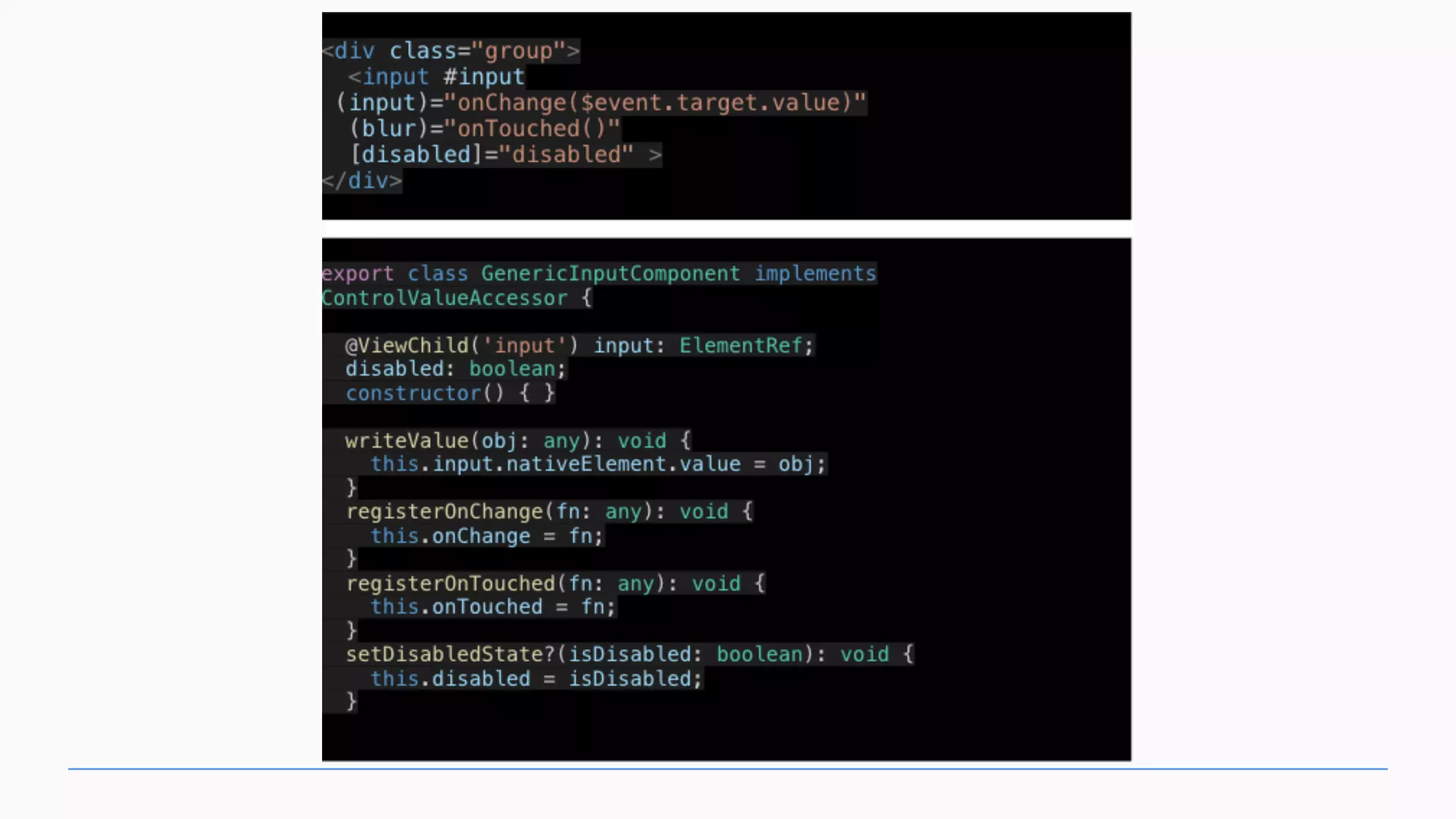
![Handle Validations validate(c: AbstractControl): { [key: string]: any; } { const validators: ValidatorFn[] = []; if (this.isRequired) { validators.push(Validators.required); } if (this.pattern) { validators.push(Validators.pattern(this.pattern)); } return validators; }](https://image.slidesharecdn.com/angulargenericforms2-180623084146/75/Angular-genericforms2-17-2048.jpg)
![Add Providers @Component({ selector: 'app-generic-input', templateUrl: './generic-input.component.html', styleUrls: ['./generic-input.component.scss'], providers: [{ provide: NG_VALUE_ACCESSOR, multi: true, useExisting: GenericInputComponent }, { provide: NG_VALIDATORS, multi: true, useExisting: GenericInputComponent }] })](https://image.slidesharecdn.com/angulargenericforms2-180623084146/75/Angular-genericforms2-18-2048.jpg)
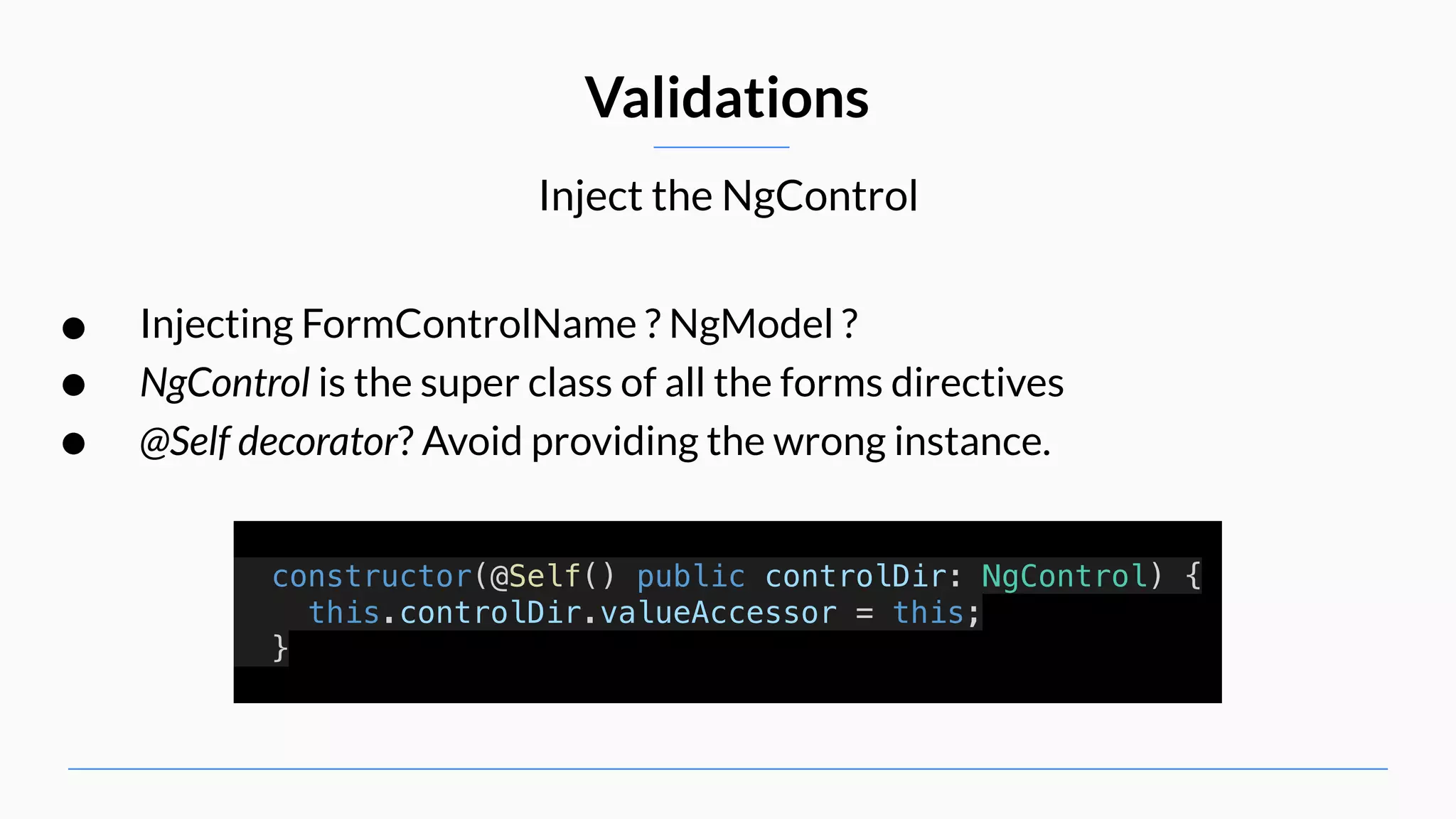
![Remove the providers Validations @Component({ selector: 'app-generic-input', templateUrl: './generic-input.component.html', styleUrls: ['./generic-input.component.scss'], // providers: [{ // provide: NG_VALUE_ACCESSOR, // multi: true, // useExisting: GenericInputComponent // }, // { // provide: NG_VALIDATORS, // multi: true, // useExisting: GenericInputComponent // }] })](https://image.slidesharecdn.com/angulargenericforms2-180623084146/75/Angular-genericforms2-20-2048.jpg)
![Considering base class validators Validations ngOnInit() { const control = this.controlDir.control; const validators: ValidatorFn[] = control.validator ? [control.validator] : []; if (this.isRequired) { validators.push(Validators.required); } if (this.pattern) { validators.push(Validators.pattern(this.pattern)); } control.setValidators(validators); control.updateValueAndValidity(); }](https://image.slidesharecdn.com/angulargenericforms2-180623084146/75/Angular-genericforms2-21-2048.jpg)
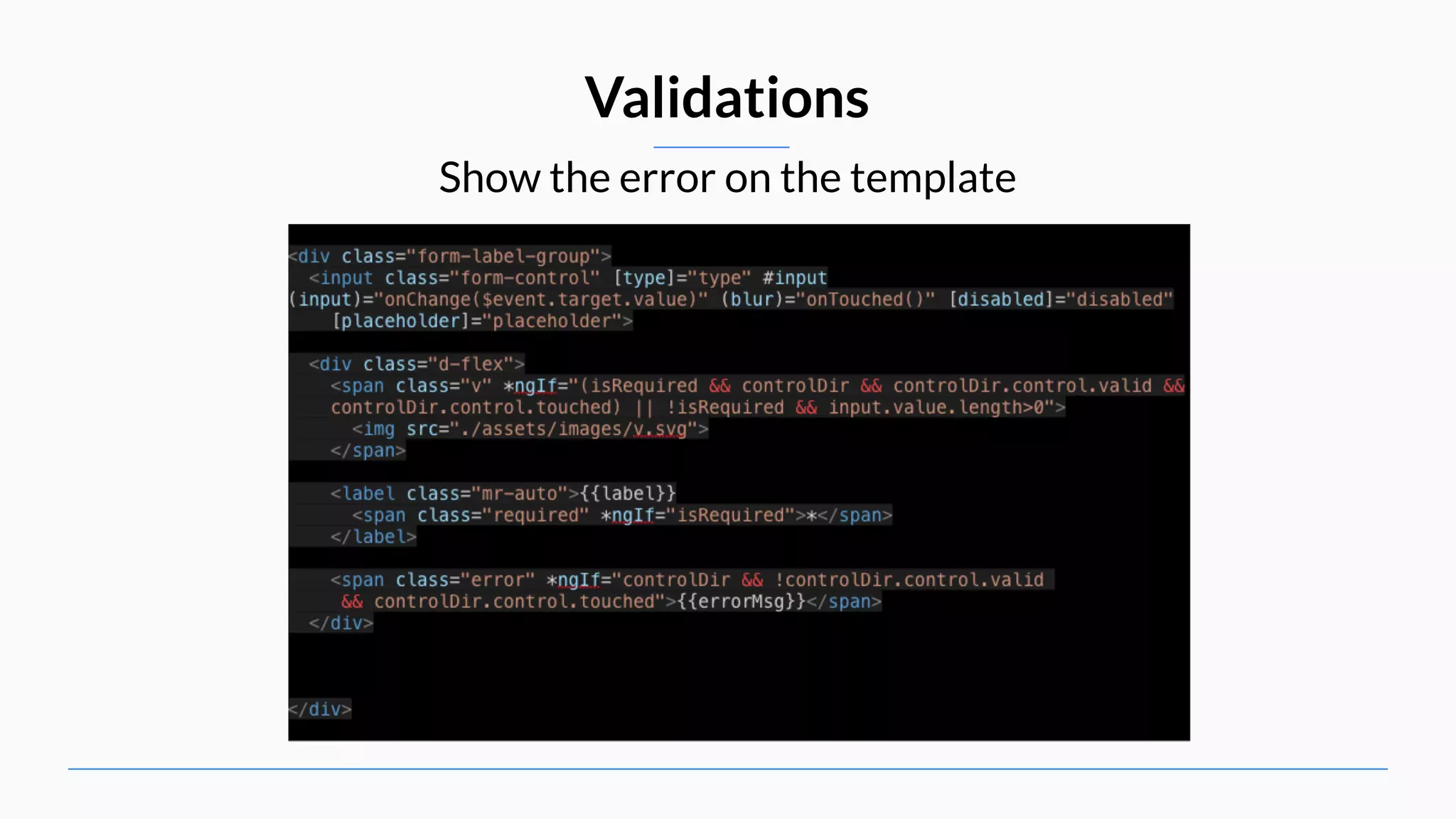

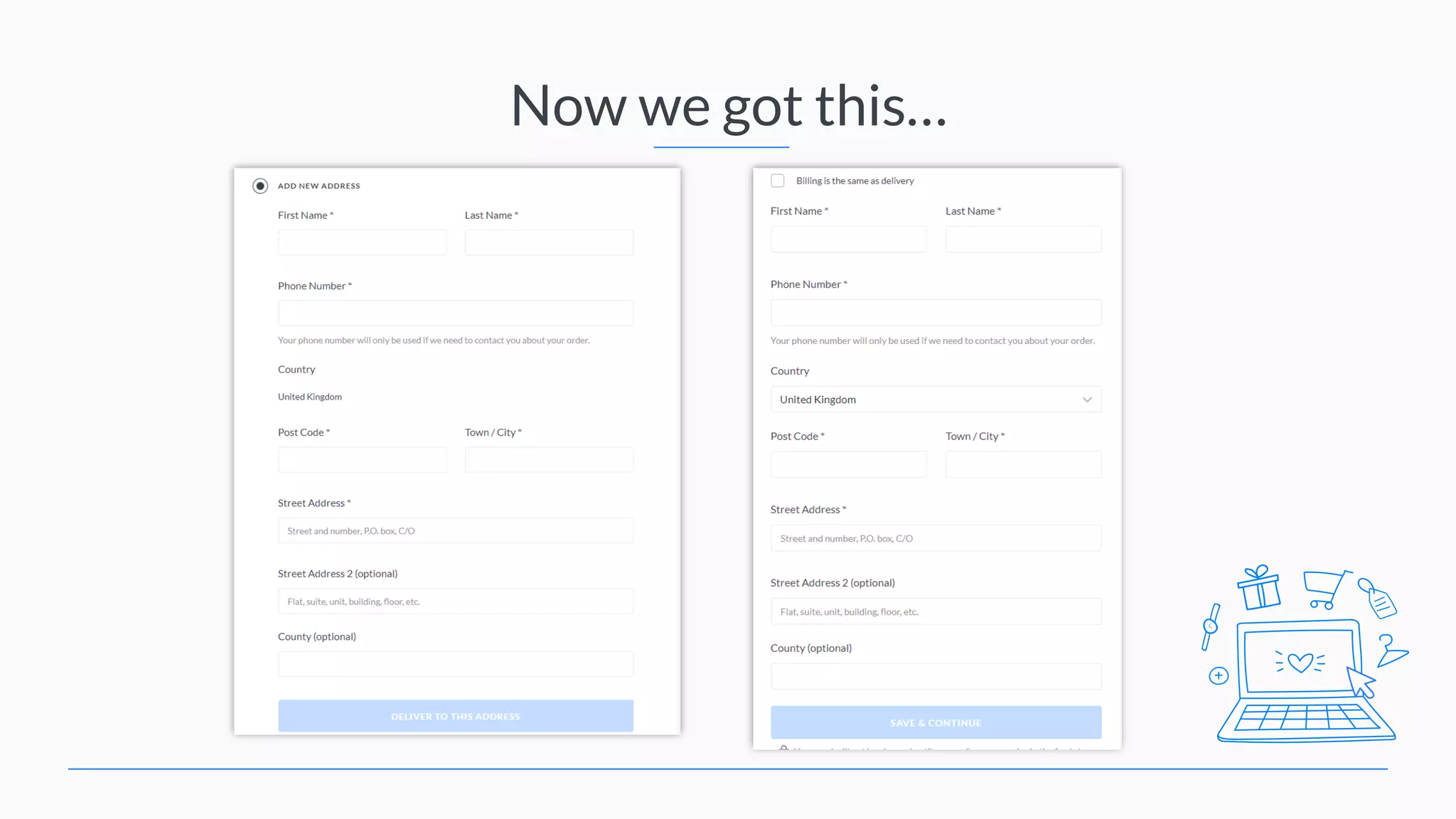
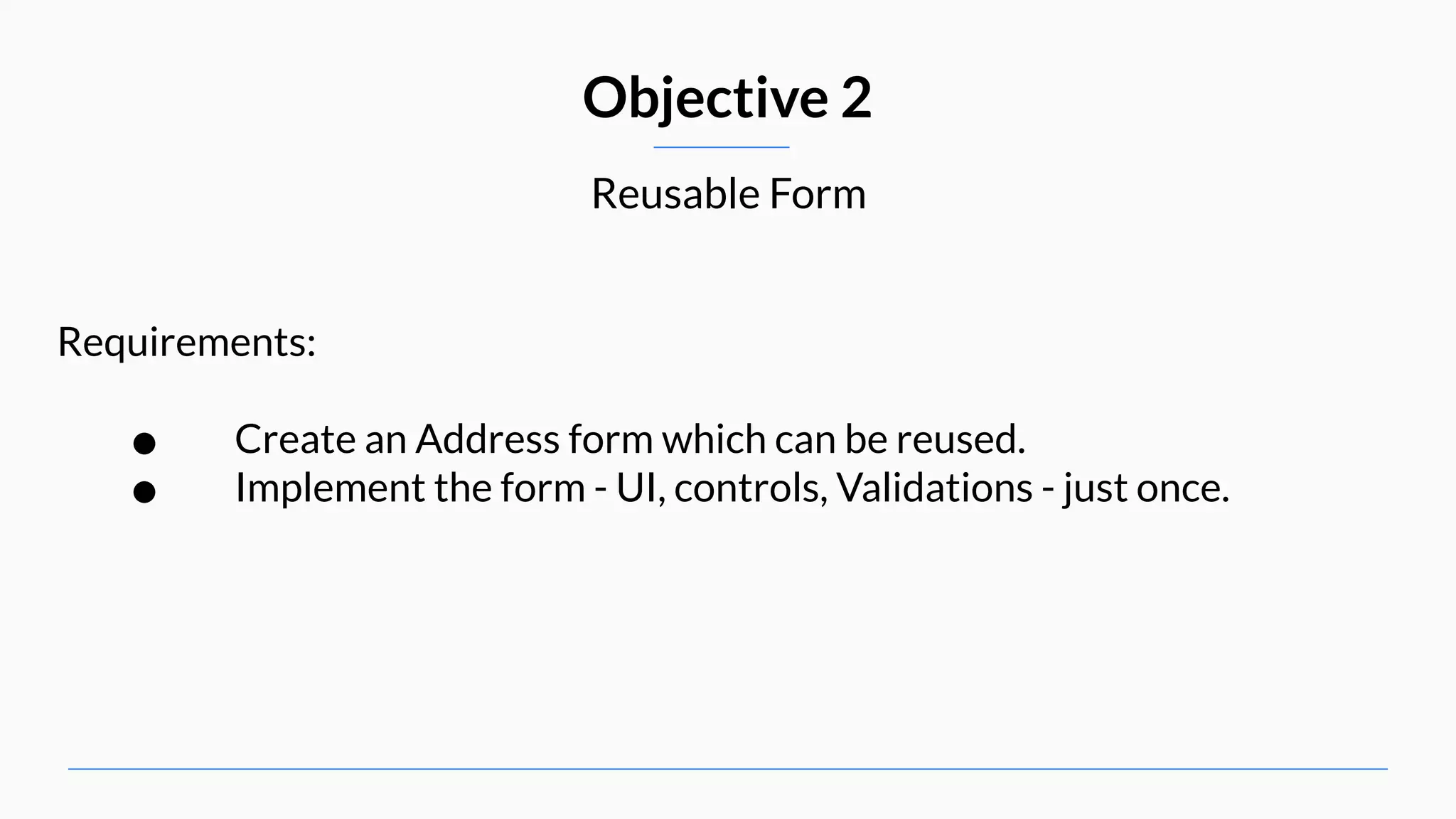
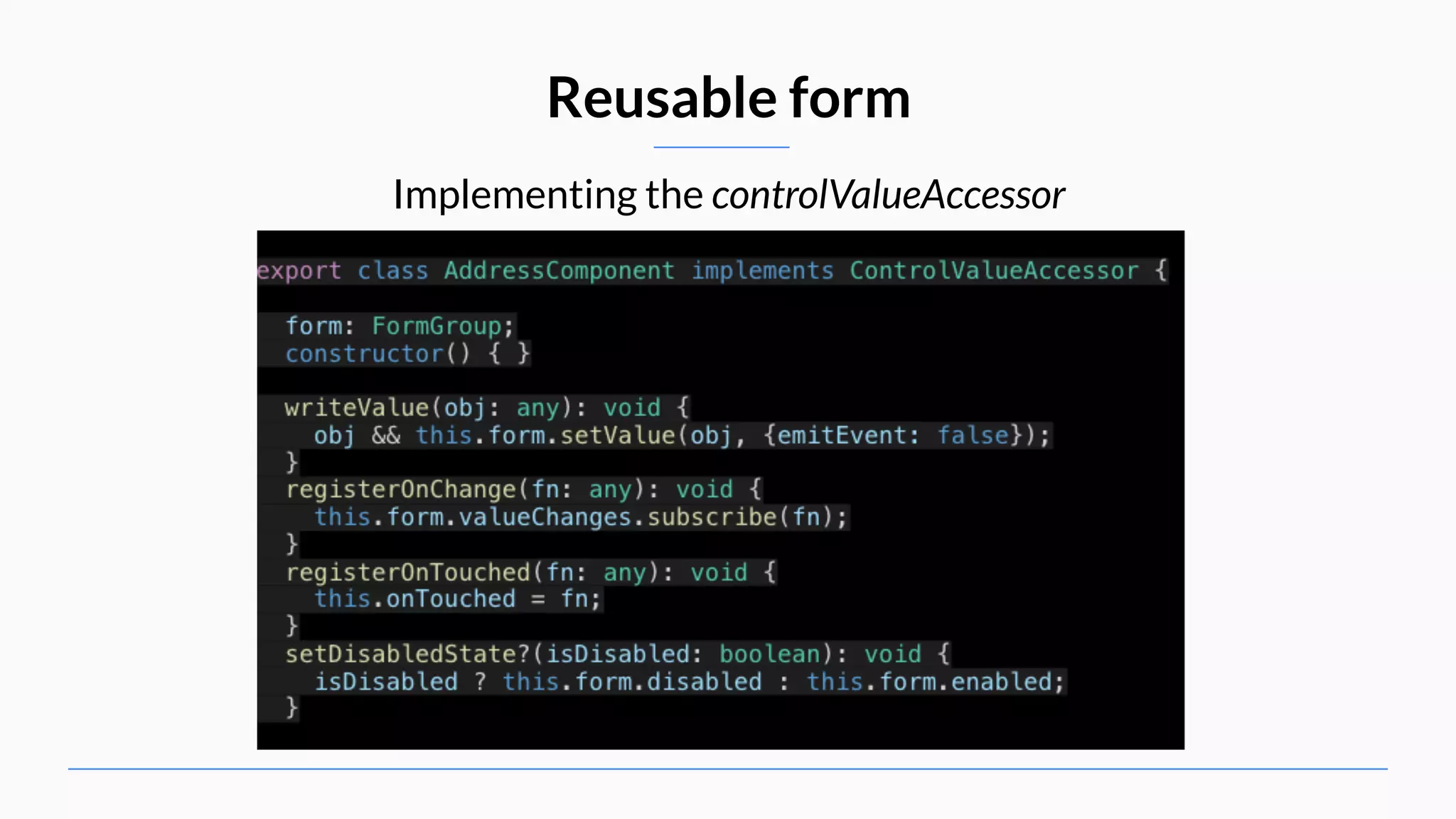
![But..Maybe there is a quicker way to do it • Start from add controlContainer to you viewProviders as FormGroupDirective @Component({ selector: 'app-address-form', templateUrl: './address-form.component.html', styleUrls: ['./address-form.component.scss'], viewProviders: [{ provide: ControlContainer, useExisting: FormGroupDirective }] }) • Why we using viewProviders and not the usual providers?](https://image.slidesharecdn.com/angulargenericforms2-180623084146/75/Angular-genericforms2-27-2048.jpg)
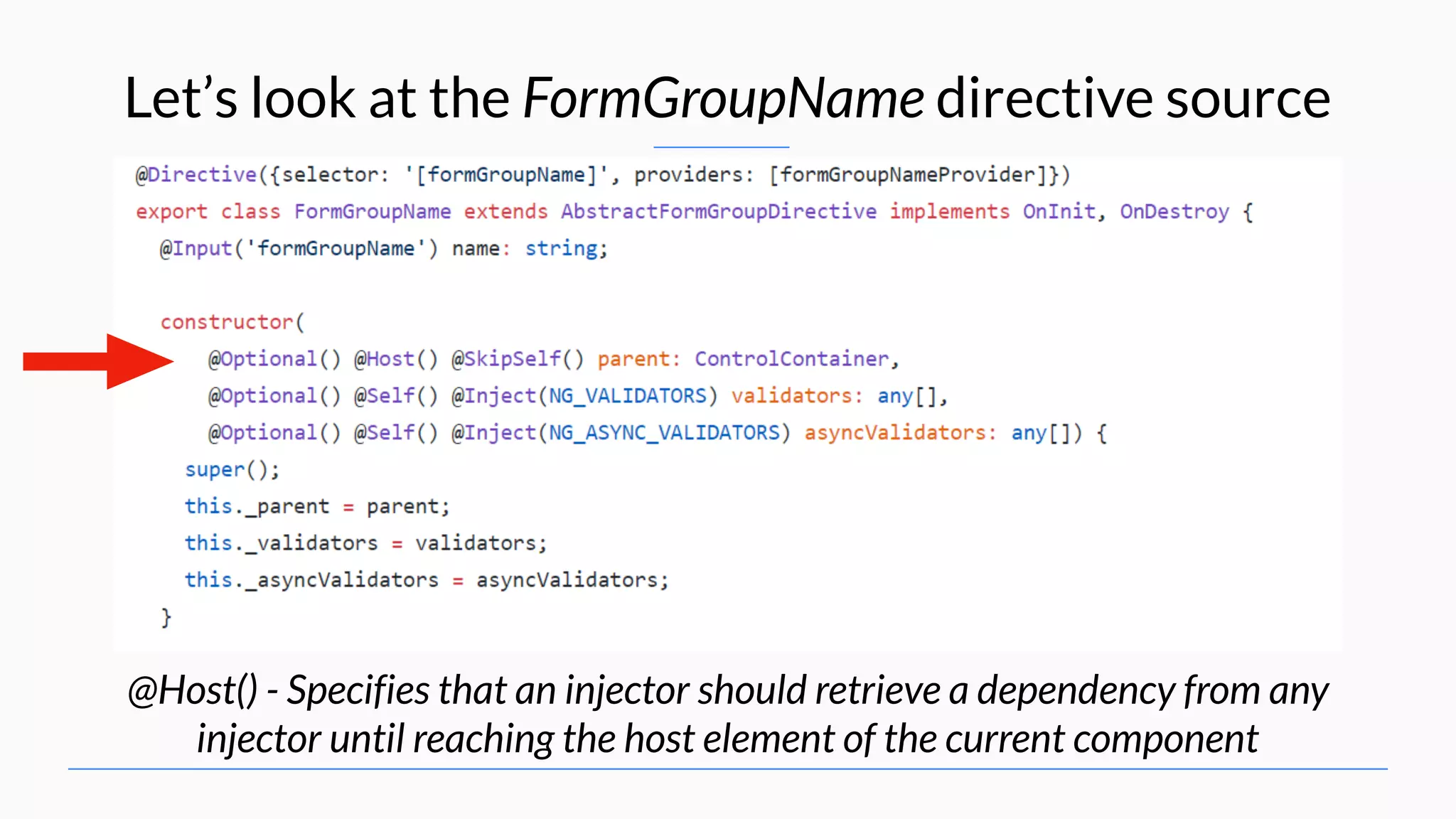

![Reusable form • Now you can setup your form and validations this.form.addControl('addressForm', this.formBuilder.group({ 'firstName': [null, [Validators.required]], 'lastName': [null, [Validators.required]], 'phone': [null, null], 'street': [null, [Validators.required]], 'city': [null, [Validators.required]], 'state': [null], 'zip': [null, [Validators.required]], }));](https://image.slidesharecdn.com/angulargenericforms2-180623084146/75/Angular-genericforms2-30-2048.jpg)
![Reusable form • Now you can use your addressForm inside any reactive formGroup and get it as control <form [formGroup]="addressForm" novalidate (ngSubmit)="onSubmit()"> <app-address-form [address]="address"></app-address-form> <button class="btn btn-primary" type="submit" [disabled]="! addressForm.valid"> Submit </button> </form>](https://image.slidesharecdn.com/angulargenericforms2-180623084146/75/Angular-genericforms2-31-2048.jpg)

